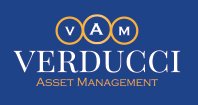Durable All Weather Portfolio Construction
It seems that there have an increase in severe weather conditions these days including fires, floods, and hurricanes. Hurricanes are a constant threat during the summer and fall months, and we have learned to prepare appropriately so that we limit any damage or inconvenience caused by the high winds, heavy rain, and storm damage that happens with these major storms. Our Investment portfolios likewise will go through stormy conditions from time to time. Economic recessions can slow sales and negatively impact businesses and the value of our equity holdings.Rising inflation data can erode the value of our fixed income investments. Currently there is very little inflation signals. Excessive market declines occur from time to time and can cause someone to feel nervous and undermine our outlook for future market performance. While market conditions have been quite robust this year, we should always expect market volatility and declines to occur at any time.As we have learned how to properly prepare in advance for storms, we should have learned how to construct durable portfolios built to withstand market volatility. Due diligences and prudentportfolio construction starts with asset allocation. The next item is an investment policy statement for each client which factors in investment goals and objectives, investment time horizon,risk tolerance level, and investor cash flow needs. We can then prepare an asset allocation plan that will serve as a guide that will help each investor to achieve their financial goals.The three primary asset classes that are available to investors are equities, fixed income, and cash or money market instruments. Equities represent ownership in a business. Fixed income assets are the debt of the business. In the corporate capital structure, owners of the debt have preferred ownership over the equity ownership. Because of this fixed income investments typically carry less risk of loss and therefore lower expected investment returns. Equity asset valuations are more volatile than fixed income assets valuations and historically have provived higher returns than fixed income investments over extended periods of time. Cash has just about no risk of loss and as a result will earn much lower returns than either equities or fixed income. Combining these three asset classes together pursuant to the investment policy statement is at the core of professional wealth management.In creating a durable portfolio, we need to balance the investor's strong feelings of wanting higher investment returns combined with the investor's unwillingness of mark volatility. The fundamental distinction between equities and fixed income assets is that they are non-correlated assets. Usually when equities rise in value, fixed income investments will decline in value.Also, when equities are falling in value, fixed income values will go up. The right combination of these non-correlated investments will yield investment returns that are consistent with the clients investment policy statement. Our role as investment managers, we seek to balance the appropriate allocation of these investment assets to ensure your portfolio is able to endure marketvolatility.Within the equity and fixed income asset classes, we want to have the appropriate diversification to reduce the risk of any one asset undermining the portfolio returns. For the equity portion of the portfolio we want to primarily invest in U.S. securities, but we also want to invest internationally and emerging markets. With domestic securities, we will primarily in large-cap companies, but we also want to have a portion invested in mid-cap and small-cap companies. Also, among our U.S. equity investments, we want to be diversified across different economic sectors so that the portfolio has representative investments in all areas of the economy. Having multiple levels of diversification will serve to limit volatility within the equity portion of the portfolio.In the fixed income asset class, there are two necessary elements that need to be balanced. The first, is credit quality, which is the probability of the issuer making timely payments on the bond and also repaying the principal balance of the bond at the date of maturity. The second, interest rate risk, is the risk of fluctuating interest rates. The longer the maturity until the bond matures, the greater the interest rate risk. Bond Duration is the measurement of this interest rate risk. Primarily because the investor relies on the fixed income portion of the portfolio to be the less volatile portion of the portfolio, we focus on holding higher credit quality and shorter duration bonds. I hope that this long explanation has help you in someway to understand what a balance portfolio should look like and to have your advisor do her/his due diligence.Thank You,John C.Verducci 111- President
